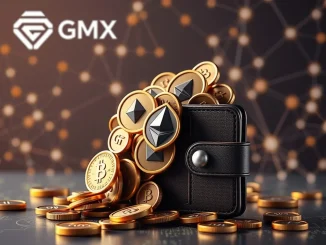
In the high-stakes world of cryptocurrency trading, every move by a significant player, often dubbed a crypto whale, sends ripples through the market. Recently, one such whale made headlines by depositing a staggering $17.04 million in USDC into their Hyperliquid account over just six days. The critical reason? To prevent the imminent liquidation of a massive 20x leveraged ETH short position, valued at an astonishing $56.76 million. This dramatic maneuver highlights the inherent volatility and extreme risks associated with highly leveraged trading in the dynamic Ethereum market.
What Exactly Happened: A Whale’s Costly Battle Against Liquidation Risk?
According to Onchain Lens on X, this particular whale’s predicament stemmed from a substantial short bet against Ethereum (ETH). A short position profits when the asset’s price falls, but faces significant losses, and potential liquidation, if the price rises. With a 20x leverage, even a small upward movement in ETH’s price can lead to substantial unrealized losses, quickly pushing the position towards its liquidation threshold.
Here’s a breakdown of the situation:
- Position Type: 20x leveraged Ethereum (ETH) short.
- Platform: Hyperliquid, a decentralized perpetual exchange known for its high leverage options.
- Total Deposit: $17.04 million in USDC over six days.
- Current Position Value: $56.76 million.
- Unrealized Loss: Approximately $10 million, indicating ETH’s price has moved unfavorably for the short.
- Objective: To increase collateral and lower the liquidation risk, buying more time and margin to prevent the position from being automatically closed out by the exchange.
This event serves as a stark reminder of the razor’s edge traders walk when engaging in leveraged trading, especially with such high multipliers.
Understanding the Mechanics: ETH Shorting and the Perils of Leverage
To truly grasp the gravity of the whale’s actions, it’s essential to understand the underlying concepts:
What is an ETH Short Position?
An ETH short position is a bet that the price of Ethereum will go down. Traders borrow ETH, sell it at the current market price, and aim to buy it back later at a lower price to return the borrowed ETH, profiting from the difference. If the price goes up instead, they incur losses.
The Double-Edged Sword of 20x Leveraged Trading
Leveraged trading allows traders to open positions larger than their actual capital. With 20x leverage, for every $1 of your own capital, you control $20 worth of assets. While this amplifies potential profits, it equally magnifies potential losses. A small adverse price movement can wipe out your initial margin, triggering a margin call or, worse, immediate liquidation.
Liquidation Risk Explained: When your losses on a leveraged position reduce your collateral below a certain threshold (the maintenance margin), the exchange automatically closes your position to prevent further losses. This is known as liquidation. It’s a mechanism to protect both the exchange and other traders, but for the individual, it often means losing their entire initial margin and sometimes more.
Who are Crypto Whales and Why Do Their Moves Matter for the Ethereum Market?
The term crypto whale refers to individuals or entities holding vast amounts of cryptocurrency, enough to significantly influence market prices with their trades. Their actions are closely watched because large buy or sell orders can create considerable price swings, impacting the broader Ethereum market.
In this case, the whale’s decision to inject $17 million suggests a strong conviction to keep the position open, despite the current unrealized loss. It could imply they believe ETH’s price will eventually fall, or they are strategically managing their risk in anticipation of future market movements. This move could also be a signal of confidence in their initial short thesis, or a desperate attempt to avoid a catastrophic loss.
Lessons for Traders: Navigating Volatility and Mitigating Liquidation Risk
This incident offers valuable insights for all traders, especially those considering leveraged trading:
- Risk Management is Paramount: Never over-leverage. Understand your liquidation price and always have a clear exit strategy.
- Margin Calls are Warnings: When an exchange requests additional funds (a margin call), it’s a critical signal that your position is in danger. Ignoring it can lead to forced liquidation.
- Market Volatility is Constant: The crypto market is notoriously volatile. Prices can swing wildly in short periods, making highly leveraged positions extremely precarious.
- Whale Watching Isn’t Trading Advice: While observing whale movements can be insightful, always conduct your own research and base decisions on your risk tolerance and analysis, not solely on others’ actions.
- Understand the Costs: Beyond potential liquidation, leveraged positions often incur funding rates (especially on perpetual futures), which can erode profits over time.
The Ripple Effect: What Does This Mean for the Ethereum Market?
While one whale’s action might not single-handedly crash or pump the entire Ethereum market, it certainly adds to the ongoing narrative. The fact that such a large player is taking an ETH short position, even if currently at a loss, indicates a bearish sentiment from their side. Their continuous funding of the position suggests they anticipate a future price drop for ETH. This ongoing battle against liquidation risk will be closely monitored by analysts and traders alike, as the outcome could provide further clues about short-term market direction.
Conclusion: A High-Stakes Game of Wits and Capital
The saga of the crypto whale on Hyperliquid depositing millions to avert an ETH short liquidation is a powerful testament to the thrilling yet perilous nature of leveraged trading in the cryptocurrency space. It underscores the immense capital and strategic foresight (or stubborn conviction) required to operate at this level, particularly when facing significant unrealized losses. As the Ethereum market continues its dynamic dance, this event serves as a critical reminder for all participants: understanding and managing liquidation risk is not just a best practice, but a fundamental necessity for survival in these high-stakes digital arenas. The whale’s desperate deposit might just be a temporary reprieve, or a strategic move that pays off handsomely in the long run. Only time will tell if this bold gamble ultimately succeeds.



